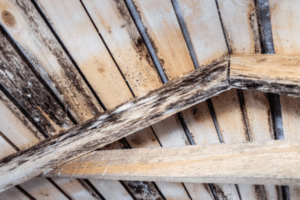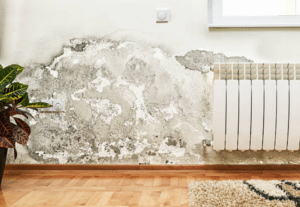Mould growth is a common problem in many homes, but it doesn’t have to be.
Plants can play a vital role in controlling indoor mould growth by absorbing moisture from the air and producing volatile organic compounds (VOCs) that can kill or inhibit mould spores.
I’ve always loved plants, but I never realised how beneficial they could be for my health until I started learning about their ability to control mould growth.
I was surprised to learn that even a few plants in a room can make a big difference in reducing the amount of mould in the air.
In this blog post, we’ll look into the role of plants in controlling indoor mould growth. we’ll also recommend some of the best plants for mould prevention, and provide tips on how to care for your plants so that they can be most effective in reducing mould.
Whether you’re new to plants or a seasoned plant parent, we hope this blog post will help you learn more about how to use plants to create a healthier and more comfortable home for yourself and your family.
Key Takeaways:
- Choose the right plants for mould prevention
- Plants can help by absorbing moisture from the air and releasing VOCs
- Place plants in areas where mould is likely to grow
- Make sure plants are getting enough sunlight and water.
- Mist plants regularly to increase the humidity in the air.
- Mould prevention is key, important to prevent it from growing in your home
UK Studies on Plants and Mould Growth
According to a recent study by the National House Building Council, 70% of homes in the UK have some evidence of mould growth.
A study by the University of Exeter found that houseplants can reduce mould spore levels in the air by up to 50%. The study found that the most effective plants for reducing mould spore levels were spider plants, peace lilies, and Boston ferns
Another study by the University of Manchester found that houseplants can help to prevent mould growth on surfaces. The study found that plants that release volatile organic compounds (VOCs), such as lavender and rosemary, were particularly effective at preventing mould growth.
Using Plants for Mould Prevention
Using plants can enhance the overall air quality of your home but also contribute to mould prevention by keeping the environment clean and healthy.
While incorporating air-purifying plants into your home is a great step towards mould prevention, there are additional methods to control humidity levels.
You can start placing containers of water on elevated surfaces, boiling water on the stove, or using a portable steamer to add moisture to the air can help increase indoor humidity.
By combining effective methods with the use of mould-resistant plants, you can create an environment that is less conducive to mould growth and promote a healthier living space.
Choices for Mould Prevention: Ivy, Ferns, and Spider Plants
When it comes to mould prevention, certain houseplants have proven to be highly effective choices.
Ivy, ferns, and spider plants are three varieties that excel at purifying the air and regulating indoor humidity.
These plants are not only visually striking additions to any room but also powerful air cleansers. They have the remarkable ability to remove airborne mould particles and purify the surrounding environment.
Research has shown that these can eliminate up to 78 percent of airborne mould, making it an excellent choice for those concerned about mould prevention.
These plants can be beautiful additions to your indoor space but also natural moisture restorers and toxin removers.
These resilient plants help maintain optimal humidity levels by releasing moisture into the air through a process called transpiration.
They have been proven to effectively remove toxins from the air, improving overall air quality and contributing to mould prevention.
These air-purifying plants for mould prevention not only enhance the aesthetic appeal of your home but also contribute to a healthier living environment.
Benefits of Air-Purifying Plants for Mould Prevention
- Enhance indoor air quality
- Regulate indoor humidity levels
- Effectively remove airborne mould particles
- Remove toxins from the air
- Contribute to a healthier living environment
Ivy: A Powerful Air Purifier and Mould Fighter
Ivy plants excel at purifying the air and combating mould growth, making them an excellent choice for mould prevention.
These anti-mould plants have the ability to remove airborne mould particles and purify the surrounding environment. By doing so, they contribute to improved indoor air quality and a healthier living space.
Not only do ivy plants add a touch of greenery to your home, but they also have the unique capability to tackle up to 78 percent of airborne mould. Their air-cleansing qualities make them a botanical solution for mould prevention.
While many plants release oxygen during the day and carbon dioxide at night, ivy is one of the few houseplants that continues to purify the air during the nighttime, aiding in a better night’s sleep and improved respiratory health.
Adding ivy plants to your indoor space is a natural and effective way to combat mould. Their ability to regulate humidity levels helps prevent excessive moisture and condensation, which creates the perfect environment for mould growth.
By keeping the air fresh and clean, these botanical wonders create an inhospitable environment for mould spores to thrive, thus reducing the risk of mould-related issues in your home.
Ferns: Moisture Restorers and Toxin Removers
Ferns are not only beautiful additions to your indoor space but also serve as natural moisture restorers and toxin removers, making them an ideal choice for preventing mould.
These versatile plants have a unique ability to absorb moisture from the air, helping to maintain optimal humidity levels in your home.
By doing so, they create an environment that is inhospitable to mould growth, as mould thrives in damp conditions.
With ferns in your living spaces, you can effectively regulate moisture and reduce the risk of mould.
In addition to their moisture-restoring properties, ferns also act as toxin removers, purifying the air in your home.
They have the ability to absorb harmful chemicals and toxins such as formaldehyde, xylene, and toluene.
These pollutants are commonly found in household items like furniture, paints, and cleaning products.
By incorporating ferns into your indoor decor, you can improve the air quality, creating a healthier and safer environment for you and your family.
When choosing ferns for mould prevention, consider varieties such as the Boston Fern, Maidenhair Fern, and Bird’s Nest Fern.
These species are known for their excellent moisture-regulating capabilities and air-purifying qualities.
Place them in areas of your home that are prone to high humidity or where moisture tends to accumulate, such as bathrooms, kitchens, or rooms with poor ventilation.
By strategically placing these beautiful ferns, you can not only enhance the aesthetic appeal of your space but also enjoy the added benefits of mould prevention and improved indoor air quality.
As with any plant, proper care is essential to ensure the success of your ferns in mould prevention. Be sure to provide them with adequate light, water, and humidity levels.
Avoid overwatering, as this can create excessively damp conditions that may encourage mould growth.
Regularly check the moisture levels in the soil and adjust your watering schedule accordingly. With the right care and attention, your ferns will thrive and effectively contribute to mould prevention in your home.
Tips in Using Ferns
- Choose fern varieties with excellent moisture-regulating capabilities and air-purifying qualities.
- Place ferns in areas of your home prone to high humidity or moisture accumulation.
- Provide proper care by ensuring adequate light, water, and humidity levels.
- Regularly check soil moisture levels and adjust watering accordingly.
| Fern Varieties | Moisture-Regulating Capabilities | Air-Purifying Qualities |
|---|---|---|
| Boston Fern | Excellent | High |
| Maidenhair Fern | Very Good | Moderate |
| Bird’s Nest Fern | Good | Moderate |
Spider Plants: Effective Air Cleaners and Chemical Absorbers
Spider plants are renowned for their air-purifying qualities and their exceptional ability to absorb chemicals, making them a valuable asset in the battle against mould.
These vibrant and easy-to-care-for plants have long been favoured for their decorative appeal, but their true power lies in their ability to improve indoor air quality.
Studies have shown that spider plants are highly effective in cleansing the air by removing harmful pollutants such as formaldehyde, benzene, and xylene.
Their large, arching leaves act as natural filters, absorbing these chemicals and releasing clean, fresh oxygen into the surrounding environment. In fact, one spider plant can purify the air in a room up to 200 square feet in size.
Furthermore, spider plants can help prevent mould growth by regulating humidity levels. They naturally release moisture into the air through their leaves, creating a more humid environment that is less conducive to mould development.
By doing so, they not only enhance indoor air quality but also contribute to the prevention of mould-related health issues.
If you’re looking to incorporate spider plants into your home, they are versatile and can thrive in a variety of conditions.
They prefer bright, indirect light but can tolerate lower light levels. With their cascading foliage and ability to produce numerous baby plants, spider plants make a beautiful addition to any space while actively combating mould and improving air quality.
| Benefits of Spider Plants: |
|---|
| 1. Air-purifying qualities |
| 2. Chemical absorption |
| 3. Humidity regulation |
| 4. Versatile and adaptable |
Supplementing Plant Efforts for Humidity Control
While plants can significantly contribute to mould prevention, there are other methods you can utilise to supplement their efforts and maintain optimal indoor humidity levels.
These methods can further enhance the effectiveness of plant-based mould prevention and create a healthier environment for you and your family.
One simple way to increase indoor humidity is by placing containers of water on elevated surfaces throughout your home.
The water will slowly evaporate, adding moisture to the air and helping to prevent dryness that can contribute to mould growth.
Additionally, boiling water on the stove can release steam into the air, effectively increasing humidity levels.
This can be especially useful during dry winter months when central heating systems tend to reduce humidity.
Another option is to use a portable steamer, not only as a wrinkle remover for your clothes but also as a tool to add moisture to the air.
Portable steamers emit a fine mist that can help combat dryness while allowing you to target specific areas of your home, such as bedrooms or living spaces.
Combining the use of a steamer with the air-purifying qualities of plants can create a powerful defence against mould.
Additional Methods for Humidity Control
You can implement supplementary methods to ensure that your indoor humidity remains at an optimal level, preventing excessive dryness and discouraging the growth of mould.
- Placing containers of water on elevated surfaces
- Boiling water on the stove to release steam
- Using a portable steamer to add moisture to the air
Remember to monitor the humidity levels regularly and make adjustments as necessary.
With a combination of plant-based mould prevention and these additional techniques, you can create a healthier and more comfortable living environment for you and your loved ones.
| Method | Advantages |
|---|---|
| Placing containers of water on elevated surfaces | Simple and inexpensive |
| Boiling water on the stove to release steam | Effective in increasing humidity quickly |
| Using a portable steamer to add moisture to the air | Precision targeting of specific areas |
Harnessing the Power of Plants for Mould Prevention
By harnessing the power of plants, you can effectively prevent mould growth and maintain a healthy indoor environment.
Ivy, ferns, and spider plants are three houseplants that have proven to be particularly effective in controlling mould. Ivy, with its air-purifying qualities, can eliminate up to 78 percent of airborne mould particles, ensuring cleaner and fresher air in your home.
Ferns, on the other hand, not only restore moisture to the air but also remove harmful toxins, creating a more natural and toxin-free environment.
Spider plants, known for their ability to clean indoor air and absorb chemicals, can contribute to improving indoor air quality and help in mould prevention.
Incorporating these botanical solutions into your home, along with other methods such as increasing humidity using containers of water, boiling water on the stove, or using portable steamers, you can create an environment that is less conducive to mould growth.
Remember, prevention is key when it comes to mould, and harnessing the power of plants is an effective and natural approach to keep your home mould-free.
Conclusion
While plants can make a significant difference in mould prevention, it’s important to note that for more complex mould issues, seeking the expertise of professionals is advisable.
AirFresh Mould Removal London is a trusted mould removal service with a team of mould experts who can effectively address and eliminate mould problems.
If you suspect a severe mould issue in your home, don’t hesitate to contact AirFresh Mould Removal London at 0203 130 4068.
Their experienced team of mould specialists will provide the necessary assessment and professional guidance to ensure your home remains safe and mould-free.
Remember, prevention is key when it comes to mould. By incorporating air-purifying plants and adopting proper mould prevention measures, you can create a healthier and more comfortable living space for you and your family.
So, start harnessing the power of plants in your home today and breathe easier knowing that you are taking steps to combat mould and maintain a mould-free environment.
FAQ
Q: How do plants help control indoor mould growth?
A: Plants can increase humidity levels and improve air quality, which helps regulate mould growth. Certain houseplants, such as ivy, ferns, and spider plants, are particularly effective at this.
Q: Which plants are effective at regulating humidity and reducing condensation?
A: Ivy, ferns, and spider plants are three houseplants that are known for their ability to regulate humidity and reduce condensation. Ivy is especially good at cleansing the air and can tackle up to 78 percent of airborne mould.
Q: What are the benefits of ivy plants for mould prevention?
A: Ivy plants are powerful air purifiers and mould fighters. They have the ability to remove airborne mould particles and purify the surrounding environment.
Q: How do ferns contribute to mould prevention?
A: Ferns restore moisture to the air naturally and help remove harmful toxins, making them effective contributors to mould prevention.
Q: What makes spider plants effective for mould prevention?
A: Spider plants are known for their air-cleaning abilities and their proficiency in absorbing chemicals. They can improve indoor air quality and contribute to mould prevention.
Q: Are there other methods to control humidity besides using plants?
A: Yes, there are other methods to increase indoor humidity. You can place containers of water on elevated surfaces, boil water on the stove, or use a portable steamer to add moisture to the air while removing wrinkles from fabrics.
Never attempt to remove mould yourself, it is important to call a professional mould remediation company to ensure that the mould is removed safely and completely.
Please contact us at 0203 130 4068. We offer a free consultation and can help you to develop a plan to remove mould and prevent it from coming back.




